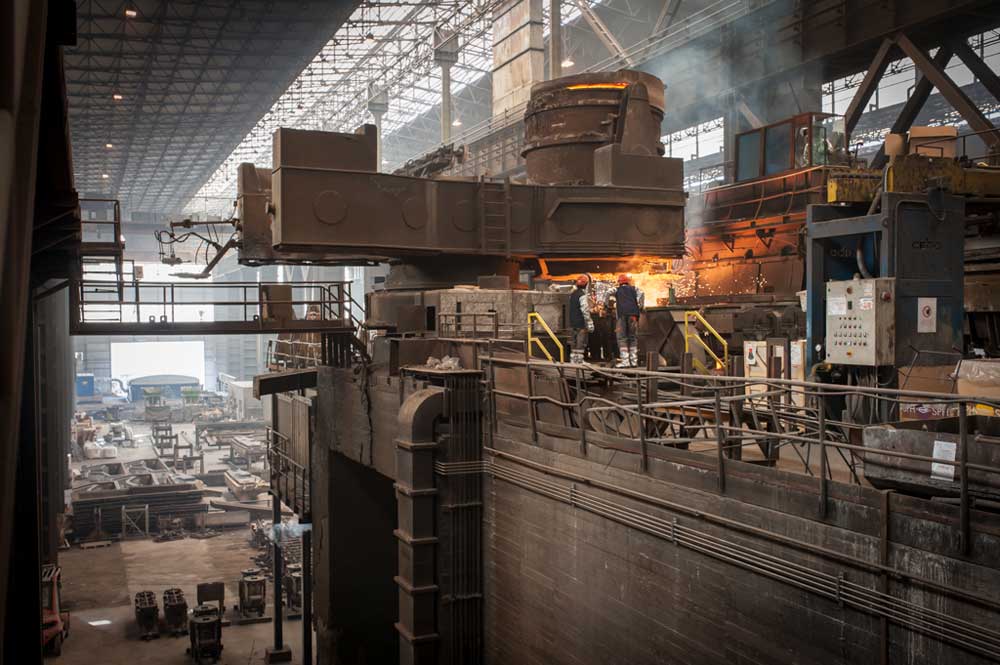Italian flat steel producer Acciaieria Arvedi plans to adapt its processes to use more ferrous scrap and cut down use of imported pig iron and hot-briquetted iron (HBI), as steel industry executives warned greater global demand for scrap and metallics to cut emissions may impact tradeflows.
Arvedi operates two electric arc furnaces (EAF) and wants to use more scrap to reduce carbon emissions further and benefit from recycling local supplies, Maurizio Calcinoni, vice president of Arvedi, said at an Association for Iron and Steel Technology webinar on Oct. 28.
Cremona-based Arvedi uses around 2.4 million mt/year of scrap, mostly sourced from Italy and Europe, with 600,000-700,000 mt of pig iron and 400,000-500,000 mt of HBI a year. The company is working with scrap suppliers, to monitor received qualities, and working with new shredding processes to help clean the scrap for use.
Italy is a major scrap-based steel producer, accounting for 17-19 million mt of scrap demand, and importing around 4 million mt of scrap, as well as around 1 million mt of pig iron and around 700,000 mt of HBI, he said.
Arvedi has 20-25 years of experience using scrap and has been paying close attention on the mix of grades, and on how to improve scrap quality as well as reducing residuals in the scrap, he said. Arvedi is closely monitoring copper content in scrap, and the mix of scrap and metallics with the steel grade being produced, along with electricity consumption, slag volume and tap-to-tap operating metrics.
Calcinoni expects the European and global steel industry to place a greater attention on the overall qualities and impurities in scrap, along with origins and grades required to maximize benefits and cut down on emissions from processes and transportation.
Pig iron and HBI have higher associated carbon emissions compared with scrap, and reducing use of the metallics, which help compensate for scrap qualities, can bring down emissions.
With the energy transition and move to use more scrap in new EAFs and through the blast furnace- basic oxygen furnace process, there may be a greater depending on national and regional scrap supplies, he said.
Scrap tradeflows and export volumes could be impacted by changes in consumption, reducing volumes available and leading to higher prices for EAF-focused steel markets such as Turkey and the US, which import scrap from the EU and the UK.
Scrap demand is set to grow with climate targets and steel industry plans to use more scrap and reduce carbon may have a bigger impact on EAF mill operations and sustainability plans, said Sara Hornby, president of Global Strategic Solutions at the AIST webinar.
She said a global ferrous scrap rating system will be difficult to implement and gain consensus. Scrap markets have different grades and classifications in national and regional markets.
While using DRI and HBI cuts carbon emissions compared with typical blast furnace emissions, carbon is necessary for the EAF process, she said. Carbon adds to energy used by EAFs melting scrap and metallics, improving yields and improving operating conditions, Hornby added.
Supply and demand for scrap is set to change with decarbonization targets, on a local and regional level, the Materials Processing Institute’s CEO Chris McDonald told the AIST event. McDonald cited scenarios modelled by Cambridge University on steel and scrap flows and availability. The changes imply a shift from blast furnaces to EAF steelmaking over time, and little need for an expansion in iron ore-based steelmaking. Less reliance on iron ore imports may lead to a reduction in globally exported scrap.
— Hector Forster






